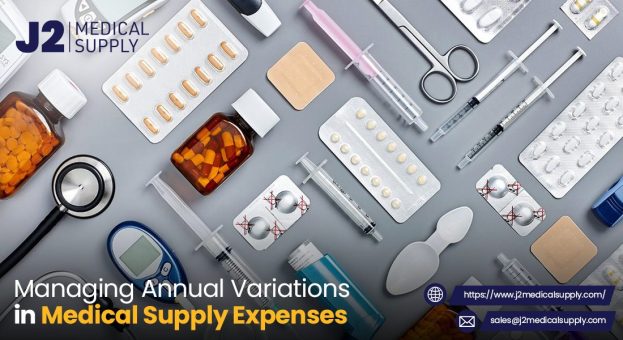In the ever-evolving landscape of healthcare, medical supply expenses can be a significant burden for hospitals, clinics, and small healthcare facilities alike. The high cost of pharmaceuticals, surgical supply costs, and the intricacies of the medical supply chain can make budgeting a challenging task. However, with the right strategies in place, healthcare organizations can effectively manage and mitigate the impact of annual variations in medical supply expenses. This article explores ten essential strategies that can help you navigate this complex terrain and maintain fiscal health.
1. Conduct a Comprehensive Expense Analysis
To effectively manage medical supply expenses, the journey must begin with a comprehensive expense analysis. Think of it as a diagnostic tool for your healthcare facility’s financial health. This analysis involves a detailed examination of your expenditure patterns, aiming to pinpoint where your medical supply expenses are concentrated.
By delving into the nitty-gritty of your expenses, you can identify trends, anomalies, and areas with the highest costs. For instance, it may reveal that surgical supply costs have been steadily increasing over the past few years, or that pharmaceutical expenses spike seasonally. Armed with this information, you can move forward with a clearer picture of the financial landscape.
2. Collaborate with Suppliers
One of the golden rules in the healthcare industry is that collaboration fosters success. Establishing strong relationships with your medical supply vendors can be mutually beneficial. Open lines of communication and regular interactions with suppliers can be more than just transactional. They can be opportunities to negotiate for better pricing.
Engaging in meaningful discussions with suppliers can lead to agreements that suit both parties. Consider forming long-term contracts with suppliers for items that have predictable demand. These contracts can provide your healthcare facility with stable prices, shielding you from unexpected price hikes and contributing to overall cost control.
3. Implement Inventory Management Systems
Effective inventory management is a cornerstone of prudent financial stewardship in healthcare. An inventory management system can be your guiding light through the labyrinth of medical supplies.
Invest in state-of-the-art inventory software that not only helps you keep track of stock levels but also analyzes consumption patterns. By understanding how your healthcare facility consumes medical supplies, you can make data-driven decisions that lead to substantial savings. Additionally, minimizing excess stock can free up capital that can be allocated to other critical areas of your operations.
4. Embrace Group Purchasing Organizations
In the world of medical supply procurement, there’s strength in numbers. Enter group purchasing organizations (GPOs). These organizations are formed to harness the collective buying power of multiple healthcare facilities to secure bulk discounts on a wide range of medical supplies.
By becoming a member of a GPO, your healthcare facility gains access to significant cost savings. Whether you’re in need of bandages, syringes, or advanced surgical equipment, GPOs can help you procure these essentials at prices that are often unattainable through individual negotiations.
5. Evaluate Product Substitution
In the quest to manage medical supply expenses, it’s crucial to think creatively. Are there opportunities to substitute expensive medical supplies with equally effective but more cost-efficient alternatives?
Collaborate with your healthcare professionals to evaluate these substitution options. Ensure that patient care remains the top priority and that any substitutions are both safe and effective. By exploring this avenue, you can potentially reduce costs without compromising the quality of care provided at your facility.
6. Staff Training and Education
Sometimes, the solution to reducing medical supply expenses lies within your own walls. Improper use of medical supplies can lead to unnecessary waste. Training and educating your staff can go a long way in optimizing resource utilization.
Invest in comprehensive staff training programs that focus on the efficient and responsible use of medical supplies. By fostering a culture of responsibility and resourcefulness among your team, you can ensure that every supply is used effectively, minimizing waste and ultimately reducing expenses.
7. Monitor Market Trends
In the fast-paced world of healthcare, staying ahead of the curve is essential. Medical supply markets are no exception. To effectively manage expenses, it’s imperative to stay informed about market trends and innovations in the medical supply industry.
Embrace new technologies and practices that can lead to long-term cost savings. Being proactive in adopting these innovations can not only help you manage current expenses but also position your healthcare facility for success in the future.
8. Set Budgetary Controls
Establishing and adhering to strict budgetary controls is the bedrock of financial stability. Your budget is your financial compass, guiding you through the turbulent waters of medical supply expenses.
Set clear budgetary guidelines for medical supply expenses, taking into account the data from your expense analysis and market trends. Regularly review and adjust budgets based on historical data and changing needs. Ensure that all departments within your healthcare facility are aligned with these budgetary goals, fostering a sense of financial responsibility throughout the organization.
9. Explore Outsourcing Options
In the pursuit of cost savings, don’t overlook the potential benefits of outsourcing certain aspects of your medical supply chain. Distributing and managing medical supplies can be complex and resource-intensive.
Consider outsourcing these functions to specialized third-party providers. By doing so, you can often reduce operational costs and streamline processes, allowing your healthcare facility to focus on what truly matters—providing top-notch patient care.
Managing medical supply expenses is an ongoing endeavor that requires vigilance and adaptability. By implementing these strategies, healthcare organizations can navigate the challenges posed by annual variations in medical supply costs and ensure that quality patient care remains the top priority.For more information on how J2 Medical can assist your healthcare facility in optimizing medical supply expenses, please visit our website or contact our team for personalized solutions.




